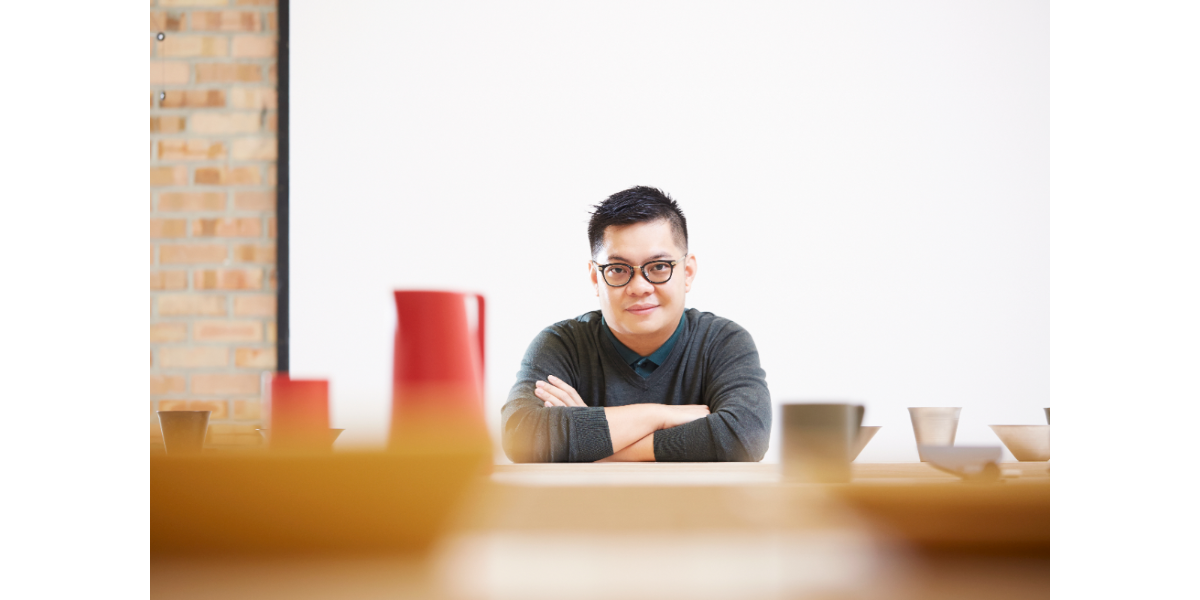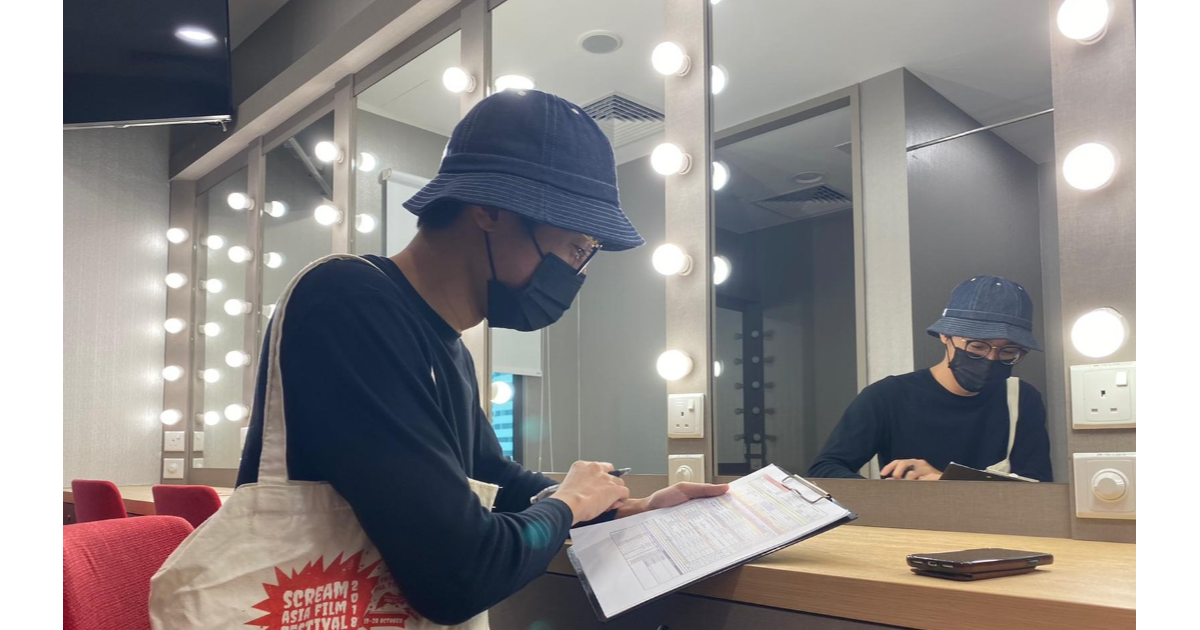Sometimes, you need a little jolt to remind you of your aim in life.
For Edwin Low, founder of boutique lifestyle brand Supermama, that moment came 12 years ago, when he was speaking to a group of students. He was then a lecturer at Singapore Polytechnic (SP)’s Experience and Product Design course.
“When I asked my students whether they wanted to open their own design businesses, all hands went up. But when I asked how many were willing to toil for years to achieve that dream, none of them raised their hands,” he says.
Edwin was taken aback by their response, but it dawned on him that he was doing the same – playing it safe.
“My dream had always been to open a design studio and business, but here I was playing it safe – with a comfortable job as a lecturer.”
“I felt I had to lead by example,” he says.
A year later in 2010, with renewed entrepreneurial spirit, Edwin plucked up the courage and took the plunge. He set up Supermama, a brand that sells locally- and Japanese-designed artisan products, such as porcelain.
It was a bet that paid off, he says. “We are currently a sustainable business with 4 full-timers and a retail outpost in Singapore and Tokyo,” says Edwin.
Tough start
The early years were very tough. He and his wife, who worked in the civil service, left their jobs to run the business full-time. They had two children – a two-year-old and a four-month-old – but they were determined to go all in.
The family downgraded from a four-room HDB flat to a three-room flat to finance their first store.
The business was not sustainable the first few years. But Edwin stuck to his guns and by the fourth year, his fortunes had turned a corner.
Increased publicity and more business connections, especially with Japanese craftsmen, meant that he could create and design more unique products, and boost sales.

Edwin discussing Supermama product ideas with other designers
The lifestyle product space may have been a niche market to tackle, but Edwin has no regrets.
“Yes, it was definitely a huge risk to take and there were times I wanted to throw in the towel. But I had a long-term vision to promote locally designed products, and I was determined to see it through,” he says.
Intro to Art
Edwin’s Supermama brand was a big gamble, but he is no stranger to taking risks in the pursuit of his long-time passion – art and design.
Edwin’s interest in art was kindled after his teacher at St Andrew’s Secondary School encouraged him to take up an elective in art in Secondary 2 after seeing his drawing skills.
This meant staying back three hours after school twice a week, but Edwin was game for it. “I was interested in building and designing objects from scratch, so I worked on pottery,” he says.
Edwin says he wasn’t only learning art techniques, such as composition and colour theory, in secondary school. He was also developing problem-solving and basic business skills in his Design & Technology (D&T) class.
“In D&T, you are required to identify problems and figure out how your project solves that problem, and the tools you need to develop this solution. It is a form of entrepreneurship,” says Edwin. “You spend two years iterating your solution and then you present it to your client, who in this case is your teacher.”
Change of course
It would seem only logical that Edwin would take up a creative or arts-based programme after his O-levels, but that was not the case, initially.
“I didn’t think a career in art was a pragmatic option. I needed to support my family and I felt that going to a university and studying engineering was the best way forward.” To pursue this “safe option”, Edwin enrolled into the science stream at St Andrew’s Junior College (SAJC).
After his A-levels, Edwin was offered a place at the National University of Singapore (NUS) to study engineering, and his path seemed to be set. But while he was doing his National Service, NUS launched their Industrial Design Programme. And so, Edwin switched course. It was a leap of faith.
“I was a bit apprehensive at first because it was a new programme, and no one had gotten a job with that degree yet. But it was too good an opportunity to pass up. I knew that my heart would always be in art and design,” says Edwin.
Finding himself
Looking back on his life, Edwin feels that all the experiences have helped him be the person he is today.
While he did not learn anything related to design when he was at SAJC, it was still a pivotal period that would shape his character.
“I learnt to be more social and extroverted when I was playing in the hockey team. In the business of retail, you need to be able to speak to people and sell your products. You can’t just design a nice item and expect people to come to you,” he says.
Edwin adds that his JC subjects were also important. “Studying General Paper (GP) encouraged me to learn more about world affairs. It gave me a drive and discipline to read, to continuously seek out and analyse new information. This would help me when I took my Master’s because I had to continuously read up on design journals,” he says.
In his Economics class, Edwin says, he learnt about the mechanics of supply and demand and other fundamental business knowledge. “With the benefit of hindsight, I would definitely say that JC was a time where I learnt to be a more well-rounded person, which helped me succeed as a businessman later,” he says.
Designing for impact
During university, Edwin grasped opportunities to build experience in the field: he worked part-time at production houses doing graphic design and producing videos. The projects he developed in class were shown to industry executives.
“By the end of my course, I was confident in my skills and experience. I even had a few job offers from consumer electronics companies to design their products,” says Edwin.
But he decided to further his studies and take up a postgraduate scholarship in Industrial Design – a programme he describes as “life-changing”.
“The two years I spent in the Master’s programme really broadened my mind to different design perspectives,” says Edwin. “One incident that stood out was when I was undertaking an immersion programme in Japan. I learnt about how design can impact societal behaviour, and how traditional craft and skills can be woven into the modern world.”
To illustrate his point, Edwin cites an example of a Supermama product he designed during the COVID-19 pandemic.
“When Prime Minister Lee Hsien Loong addressed Singapore during the pandemic in his televised speech, I remember that he would take a sip of water from a cup before he switched to another language. It was quite funny and a meme of that went viral,” says Edwin. “So, I created a cup that resembled the one he used in the speech. I wanted Singaporeans to remember the good parts of the pandemic: that we all banded together as a nation to stay upbeat.”

From teacher to entrepreneur
When Edwin graduated from his Master’s programme, he was eager to impart his knowledge to budding designers, so he joined SP. He was still not ready to leap into running a business, but he was putting some ideas in place.
“I decided to take a radical approach and run my classes like a creative studio. I would assume the role of a creative director and students would work on real client briefs,” he says.
Edwin invited industry collaborators to work with him and his students. Together, they would create and finetune ideas and the students would pitch them to these companies.
“When the students got hands-on experience dealing with real-world clients, they got to think about the intangible parts of design, such as branding and association. Their design skills also improved significantly,” says Edwin.
Beyond that, Edwin says that it was also about helping students become independent learners. “It’s about giving them the vision and attitude, so that they can then discover, on their own, the skills and tools they need to achieve their desired outcome,” he says.
Edwin has not stopped learning either. “I’m always seeking advice from more experienced industry players and craftspeople,” he says.
“For example, in my third year of business, I spoke with the CEO of a metal-casting company, who encouraged me to persevere when I shared my struggles.” says Edwin. “I was also inspired by a 70-year-old craftsman in Japan, who shared that he was still looking for new ways to polish metal, even at his age!”
“Sometimes, the best way to learn is by simply interacting with people in your field,” he says. “And never giving up.”






